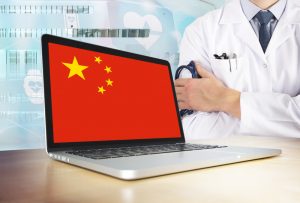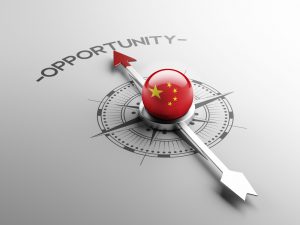

Leverage on the Opportunities from Thriving China Medical Device Market
The medical device market is thriving in China. Whether you’re manufacturing, reselling, or distributing medical devices, this post sheds light on what to do in post-pandemic.
Undeniably, the market has been experiencing growth even before the COVID-19 outbreak that accounted for 14% of the pharmaceutical market in 2019.
But first, let’s take a look at the trends right now and see what other medical companies are doing.
Leading trends in medical devices in the post-COVID era
Medical devices can come in life support machines, pacemakers, calibrators, dialysis machines, and many more. They can also be in the form of machines powered by innovative software.
The purpose of these devices is to detect, correct, and modify the function or structure of the body. Therefore, these devices are categorized into four: prevention, diagnosis, treatment, and rehabilitation.

#1 Preventive healthcare devices are on demand
Preventive healthcare takes the center stage. People are more cautious, wanting to keep themselves from illnesses. Aside from that, the pandemic has pushed public health awareness.
The awareness of prevention and disease management has resulted in increasing demand for wearables like fitness trackers, smartwatches, and biosensors, to name a few.
For instance, companies like Withings launched an analog watch to gain more exposure in China eCommerce. The device can record electric signals of a heartbeat and detect potential signs of more severe health conditions.
Another company, Medtronics, partnered with Fitbit to track people with diabetes. The mobile app monitors and collects data on glucose levels for tracking and monitoring.
On top of these features, doctors can use the data that these wearables collect for further study and early detection of the disease.
#2 Data-driven, AI-integration in medical devices
Medical device companies are also taking advantage of the abundance of data and artificial intelligence. They offer other ways to measure and monitor the results correctly. Thus, it results in the prevention and urgent diagnosis and treatment of illnesses.
The rise of monitor apps and devices not only helps medical companies develop better products, but they can better understand the newly formed consumer habits based on the information collected to meet their needs.
For example, Huma, a London-based startup, partnered with Tencent and Bayer to grow its online presence in China. Its best-selling products are Medopad and Biobeats. These are monitoring medical devices that can analyze and predict illnesses powered by AI.
iCarbonX uses AI to collect and combine medical history, behavioral and biological data from patients, and then create a map of human health. Not only does it collect data, but its technology also helps physicians understand diseases and make an accurate diagnosis for better treatments.
The Role of Medical Device Translation and Localization
Now you might be thinking of how you can gain more exposure to the China market. Enter medical device translation.
The translation should be part of your global expansion as you need to make sure that your products, software, and manuals are written in Chinese.
Medical device translation involves a critical process. Professionals must be trained to translate accurate information on device usage. For instance, the manuals on how to use the device should be properly handled. Improper use of the device can result in complications, or the worst scenario would be the patient’s death.
On one hand, localization, the process of adjusting your device features, functionalities, and properties, works best with the translation of materials.
Medical translation is about the written materials, whereas localization ensures that the functions will suit your audience’s needs.

So how can you start in translation and localization of medical devices?
For the medical device translation to take place, you can start with the following:
- Manuals and brochures
- Printed marketing materials and PowerPoint presentations
- Website and other online marketing materials
For medical device localization, one of the things you need to consider that’s critically important is software localization. On top of that, you need to know the classification of your device according to Chinese government regulations.
China National Medical Products Administration regulates medical devices and pharmaceutical products in China. It’s an administrative agency of China’s Central Government that creates and implements policies on medical devices, drugs, and cosmetics.
There are three classifications of medical devices. Quoting the agency, here are the definitions:
-
Class I – Medical devices for which routine administration can ensure safety for users and the effectiveness of the device.
-
Class II – Medical devices that can only be safe and effective with further control in addition to routine administration.
-
Class III – Medical devices that are implanted into the patient’s body, pose a threat to the patient’s health, or provide sustenance or life support.
Class I is the lowest risk class. That means the registration is comparatively easier, while Class II and III involve a longer and more rigorous process – typically requiring local testing and clinical trials before its registration.
In this matter, you may need legal consultants about the regulations and requirements before entering the Chinese market.
How Can Professional Chinese Translation Agency Work on Medical Devices?
When you work with a professional Chinese translation agency, you’d be able to get a package for your translation and localization project.
Experts in the medical field will handle your documents, especially the user guide or manuals. For example, here in LIMPID, our medical translators have more than a decade of experience — all of them have their specialization.
What’s more, if you need help in the Chinese translation of legal documents, some legal translators know the medical device industry’s ins and outs.
In short, you get all that you need to get started even if they’re small steps. Let us know how the LIMPID team can assist you.
 +1-877-574-2407 (US and Canada Toll Free)
+1-877-574-2407 (US and Canada Toll Free)  service@limpid-translations.com
service@limpid-translations.com



